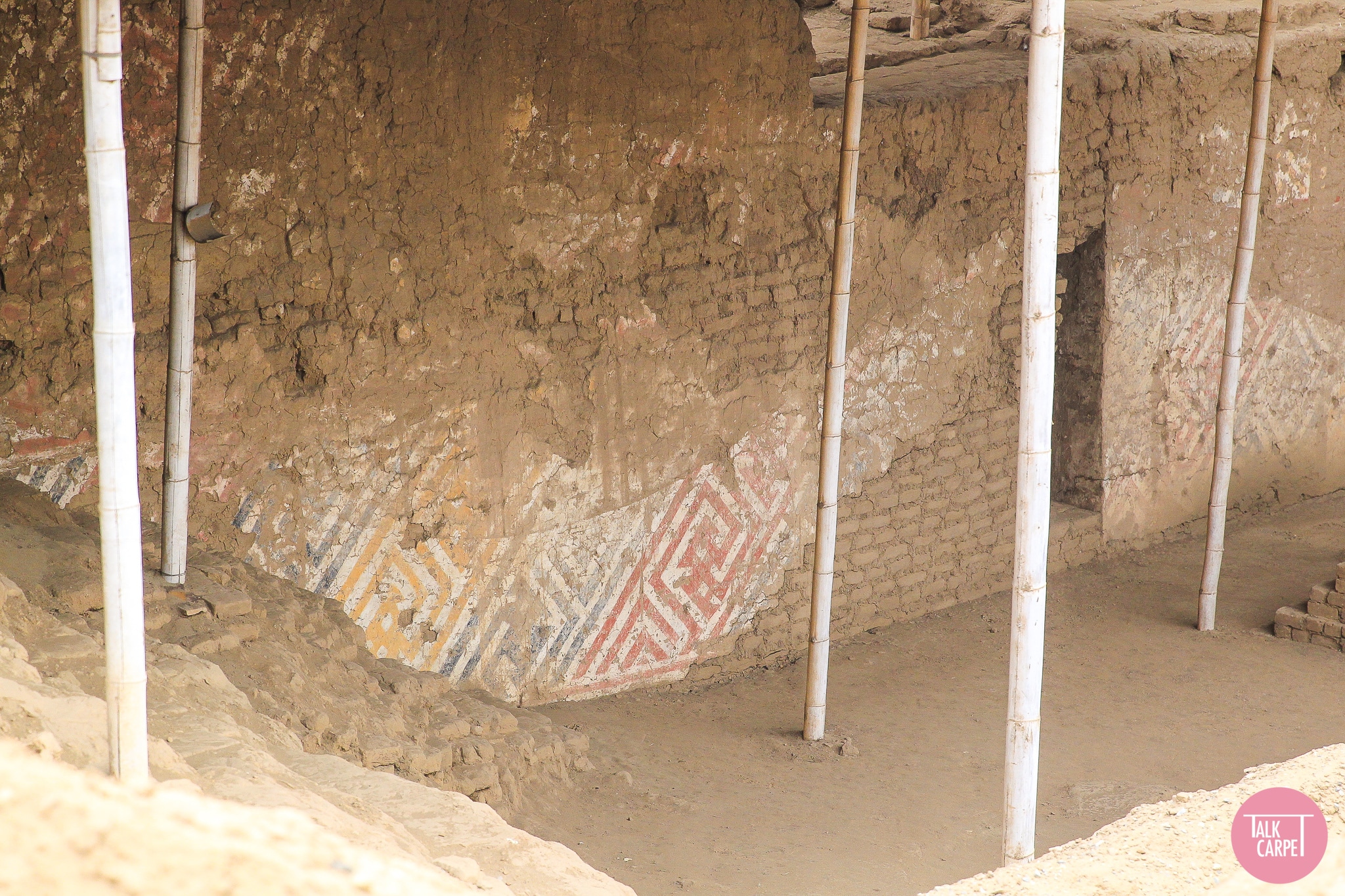Ancient Peru was a home for many civilizations, which left their marks. Wandering away from Trujillo, we came across phenomenal architecture that reveals stories about ancient cultures. We came across two different temples dedicated to the sun and moon, respectively. Temple of the Moon Peru reveals how advanced the Moche culture was. They primarily relied on agriculture, building advanced irrigation systems that were quite impressive for that time. The huacas being their worship center, the structures tell a unique story about their religion and ceremonies.
A Huaca is a religious temple, which combines a few functions under one roof. Despite conducting rituals, the building served as an administrative center open to the public.
Temple of the Moon Peru
The Temple of the Sun and Moon are two distinctive structures located within the same archaeological site. Being the largest sacred temples on the continent, they were the center of spiritual practices and religious ceremonies.
Huecas del Sol suffered erosion through the years, shrinking it to one-third of its actual size. With 40 meters in height, it is still an impressive building to observe. A largely residential area connected the two temples, with many workshops, alleys, streets, and houses. The ordinary people lived in adobe brick houses, which had separate rooms for their workshops.
The Temple of the Moon Peru is a complex that combines four plazas and three pyramid platforms. Built from adobe bricks, it is an architectural masterpiece showcasing the Moche history. The religious nature of this building prevails, as it contains ceremonial altars and murals that express their deities. The Moche worshiped many gods, as you can see on their amazing murals.
The Moche were impeccable architects and exceptional artists. They produced luxurious jewelry, unique ceramics and built monumental adobe structures. Their signature pottery features a limited color scheme consisting of rust orange, reddish-brown, and cream. The ceramics resembled animals, humans, and supernatural creatures.
Architecture
Temple of the Moon Peru is a stunning adobe brick construction with ornate friezes covering a considerable section of the walls. The bricks used in the construction process have specific marks, likely connected with their creators. Workers covered the whole brick wall with a layer of mud. This layer served as a base for ornamentation with intricate relief patterns. The Moche priests had complete control over them, resulting in repetitive prints in vibrant colors. This stunning wall art represents Ai Apaec, the chief deity in Mochecan culture. The vibrance of the colors amazed us, knowing that they sourced it from natural materials. Something that surprised us was the fact that the colors stayed, even though they were water-soluble. The lack of rain is responsible for their preservation so that we can admire the incredible paintwork today.


 The North Facade
The North Facade
The North plaza features a wall ornated with stunning relief patterns. The three-dimensional murals include supernatural creatures, priests, and warriors.
In this photo, you can notice the majestic North Facade and its details. The facade consists of seven rows, each coming with unique decorations of religious nature. The Moche displayed imagery related to human sacrifices and deities. The first layer features warriors leading prisoners tied with rope, while the second one includes presenters of gifts. The third layer shows the Spider Decapitator, a supernatural being commonly used in Moche murals. Next comes the marine deity, followed by a supernatural being that holds the head of a sacrificed person. The excavations confirmed that the temples were a center for bringing human sacrifices, revealing human remains during the process. The elements prevail through murals and ceramics, indicating that sacrificing was an essential part of their religion.











